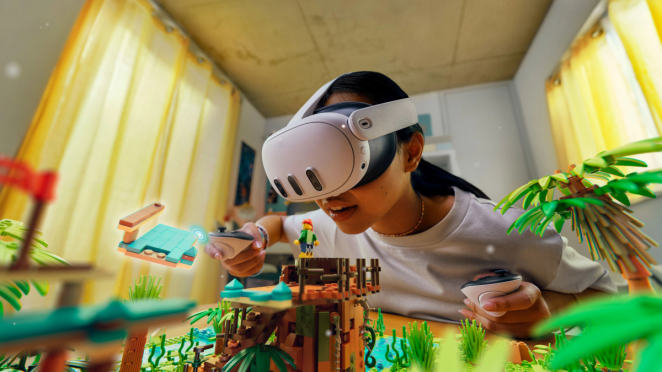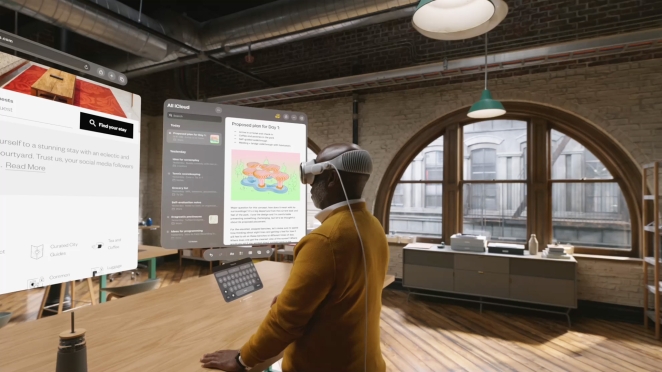When Apple unveiled its Vision Pro headset this past February, they envisioned the era of spatial computing to have officially begun. But paltry sales and lackluster reviews quickly turned the beginning of an era into nothing more than a passing moment and a few punchlines. But how did the biggest company in the world get this product launch so wrong, and what lessons can we take from it? Let’s explore.
Why Would People Want the Vision Pro?
This is a good question, but we don’t have the answer to it. Frankly, I’m not sure they did.
This was problem number one. Apple designed a product that failed to define its essential purpose for consumers. Steve Jobs famously once said, “You've got to start with the customer experience and work backward to the technology. You can't start with the technology and try to figure out where you're going to try and sell it."
After seeing the Vision Pro, does anyone think this isn’t exactly what Apple did? To me, it looked like they recognized the future of mixed reality technology and worked to combine it with the main reasons people use their iPhones. Here’s the thing: people don’t want to wear their phones on their faces.
Sure, it has some cool features, but are those significantly better than what the Oculus does? In some cases yes, but were consumers demanding them? Mostly, no. Would someone get a Vision Pro and then get rid of their Oculus? Likely not. This makes the Vision Pro an additional piece of hardware, not a replacement.
Innovative products either need to solve problems or provide something new that consumers want. I don’t think the Vision Pro does either very well. Meta’s Oculus dominates the market share, not only because they have been selling for a decade but also because it offers a variety of entertainment. It doesn’t just replicate the Facebook experience.
But that doesn’t mean there isn’t room for companies like Apple to enter the market. They just need to do it in a more consumer-friendly and thoughtful way.
Brand Name Alone Doesn’t Guarantee Success
Just because a brand is dominant doesn’t mean the success of its products is guaranteed. Measured by market cap, Apple is the largest company on the planet, yet it managed to severely miscalculate the demand for the Vision Pro. How can this be?
This isn’t uncommon. Remember when Coca-Cola launched New Coke? At the time, Coca-Cola was in the middle of the Coke Wars with Pepsi-Cola, and they were beginning to lose market share. After conducting focus groups that showed consumers preferred the sweetness of Pepsi, Coca-Cola launched New Coke, which flopped. There are countless stories like this.

Are there similarities to this story and what we see happening with Meta’s continued investment in VR? I think so. Meta’s Oculus headsets are more widely adopted and come at price points ranging from $300-$700. The Vision Pro, on the other hand, costs more than a new Mac, at a steep $3,500. Even though Apple designed the headset to integrate more into the “spatial computing” niche, high-priced products in newer categories often face adoption challenges. The significant price difference should have been enough to know that demand would be much lower.
What they miscalculated was the price consumers are willing to pay for an unnecessary, not-yet-mainstream gadget with features people don’t know they want. Just because a large brand sells it doesn’t mean people will want to buy it.
Know When to Hold Them, Know When to Fold Them
You’ve heard the saying, “No risk, no reward.” People always say this when there is a good result to speak of. But when things don’t go as planned, sometimes it simply means no reward.
Bigger companies can weather product flops better than smaller companies because of their budget size, but often it is the larger companies who are quick to admit to failure and pivot. While making major miscalculations, in my opinion, I give Apple credit for looking for ways to adapt its strategy and products to make it more viable.

Now, Apple isn’t calling it a day on their spatial computing dreams. They are said to be developing a slimmed-down, less expensive version of the headset for release sometime in 2025. What the price will be is unknown, but they recognize that to gain ground in the mixed reality ecosystem they will need to do it slowly and make it more widely accessible.
They also need to understand the market fit. Are consumers ready for a spatial computing-first technology or will it be a secondary feature with gradual adoption? I am guessing the latter. Apple needs to understand which elements of mixed reality consumers want and make those the core of their products. Having the foundation in place, they can then add their differentiators.
Understand the Ecosystem
For a product to be successful, it needs to have a place in the overall ecosystem. For Apple, the Vision Pro needs to be an extension of its other products. However, as I already mentioned, it needs to simultaneously fit within the greater mixed reality ecosystem. The big question is, will people using an Apple headset be able to be in the same virtual space as someone using an Oculus? To be successful, I think they will need to be.
The challenge Apple faces is the company has a generally closed ecosystem. How will companies like game developers approach this challenge? Will they choose to forgo creating programs exclusively for the Apple ecosystem? If so, unless Apple invests in making a product price attainable for the masses yet packs it with something so unique people have to have it, Apple should expect its headsets to be fringe products exclusive to Apple loyalists.
Missed the Target But The Future Looks Bright
Apple may have missed the mark with this product release but I am very bullish on consumer mixed reality. I think it will be a staple in homes as much as a PlayStation or Xbox is. I also think mixed reality will go well beyond games. Today’s VR live entertainment options continue to expand, and education and commerce-related capabilities are on the horizon.

Apple needs to figure out how to integrate itself into the mixed reality ecosystem quickly, otherwise, it will find itself too far behind to catch up in a meaningful way.







